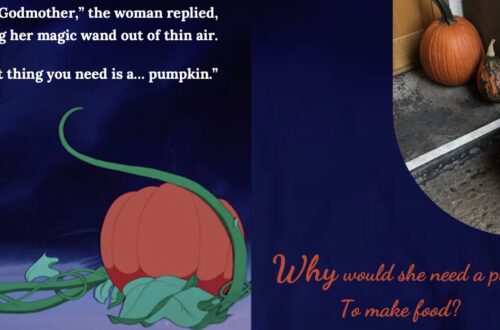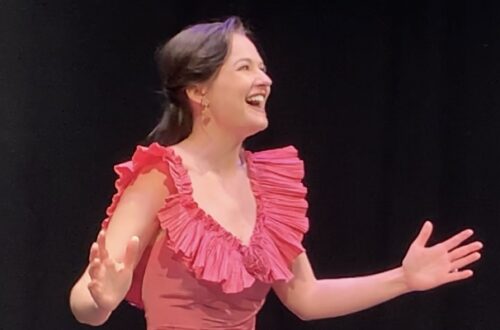“The Merry Widow” and Women’s Roles
New York University, 2018. Musical Theatre History.
“The arts are an even better barometer of what is happening in our world than the stock market or the debates in congress.”
Hendrik Willem Van Loon, Dutch-American historian, journalist, and author.
The arts have always reflected society – often depicting cultural values and norms, satirizing persistent problems, highlighting changes that are brewing, and pushing boundaries. The Merry Widow provides a revealing lens through which to examine established and changing gender roles and expectations in the West around the turn of the twentieth century.
From Henri Meilhac’s 1861 comedy L’attaché d’ambassade, the team of Viktor Léon and Leo Stein (librettists) and Franz Lehár (composer) created a Viennese operetta that soon became an unprecedented international success: Die lustige Witwe (1905). Despite having been written more than a century ago, it continues to be performed worldwide today. While many factors contribute to its popularity, its depiction of women – particularly of a strong and independent heroine [1] – is an aspect that is as universally appealing today as it was when it premiered. While much has been achieved in gender equality since 1905, the discrepancies that remain also keep a character like Hanna Glawari relevant. While we may not know the creative team’s intentions, political or otherwise, they created a character who embodied many of the freedoms women of that era craved; and the production’s widespread success helped advance the fight for women’s rights by disseminating these ideals around the globe.
Set in glamorous Belle Époque Paris, The Merry Widow depicts the lives of a group of elites from Pontevedro, a fictional Balkan kingdom whose financial security now rests in the hands of a young and attractive widow, Hanna Glawari. Formerly a humble peasant, she recently ascended to become Pontevedro’s wealthiest citizen, upon her husband’s death during their honeymoon. Hanna now finds herself surrounded by fortune-hunting suitors, and she is not naïve to their intentions. The ambassador, Baron Zeta, is desperate to secure her a new Pontevedrian husband so that her fortune will remain invested in that country’s economy. Zeta, however, does not realize that the man he has selected for the task (Count Danilo) is Hanna’s former lover, whose uncle forced them to end their romance because Hanna was penniless and beneath Danilo’s social station. Though they deny it for much of the operetta, Hanna and Danilo are still in love. Hanna’s finances prove once again to be an obstacle – Danilo refuses to pursue her now because of her wealth, and Hanna will not consent unless he professes his love for her. Toward the end of the operetta, Hanna surprises everyone by revealing that, according to the terms of her late husband’s will, she will lose her fortune if she remarries[2] – at which point, Danilo immediately professes his love and proposes. Hanna accepts and clarifies that she will lose it because the money will be transferred into her new husband’s possession.
For centuries of European culture, marital status was one of the most defining features of a woman’s life. Single and married women had few freedoms outside the home. Girls and unmarried women had to obey their fathers, and married women, their husbands. Class and wealth afforded women more free time and opportunities; since women in the upper classes were less likely to have responsibilities to earn an income or do all the housework, they had more leisure time and opportunities to attend social activities. Their options in these regards were still restricted, particularly in comparison to those of men; women still owed obedience to the men in their lives.
Though Hanna may not have had truly equal standing with men, as a widow, she certainly enjoyed more freedoms than most women of her era – including the other female principal characters in the show: wives of diplomats, whose status and duties are determined by their husbands. When Valencienne, the secondary female lead and wife of Ambassador Zeta, is suspected of having an affair, Zeta threatens to divorce her, which would likely have forced her into reduced circumstances and attached a social stigma (it is important to note that men were not held to the same standards of fidelity as women – or consequences, in cases of infidelity). Hanna’s earlier choice to masquerade as Camille’s love interest and save Valencienne’s reputation was as bold an act as it was generous.
Before her marriage, Hanna was a commoner with limited means and options. This was particularly true for love, as despite the feelings shared by Hanna and Count Danilo, her lack of station, money, and property prevented the progression of their relationship. Hanna now holds a great amount of power; she has the luxury of choice over whom she marries – if she chooses to remarry. Intelligent and levelheaded, Hanna is aware of potential ulterior motives of her many suitors and new friends, but maneuvers this with charm. Her interest in courtship is not truly piqued until she recognizes the love who once scorned her; unlike many other women, Hanna can choose to marry for love, rather than for security or obligation. Though it is not articulated, it is plausible that Valencienne may have married for motives other than love (as Zeta is many years her senior).
Though wealthy widows of that era often enjoyed the highest degree of autonomy available to women, as they had the means to support themselves without having to answer to a husband or father,[3] they still had great inequality politically. The fight for women’s suffrage had spread internationally, a fact The Merry Widow acknowledges in a line one of Hanna’s suitors sings before the Ladies’ Choice dance: “the women have fought so long to have the same rights as men.” Hanna responds that since the ball laws give her the right to vote, she’ll fulfill her civic duty.[4] Though Austrian women would have to wait thirteen years from The Merry Widow’s premier for the right to vote (1918), they achieved this freedom two years before American women (1920) and a decade before this was matched in the United Kingdom (in 1918, only women over the age of 30 were allowed to vote).[5]
Areas not addressed in this operetta, but no less vital to women’s abilities to control their futures, were gender-based commercial and economic limitations. Irene Bandhauer-Schoeffmann details many of these in her article on Austrian business practices in the nineteenth and twentieth centuries. “Under the assumption that the home was the place for women and factory work was a society-threatening development, female workers were seen as a potential threat for the moral, social and economic rules of society and condemned as ‘prostitutes’.”[6]
Austrian women whose families owned trades and crafts businesses faced double standards. Prior to and following the turn of the twentieth century, Austrian trade regulations separated men’s and women’s professions. In 1883, changes to regulations eased entry into the “women’s professions” (primarily embroidery, sewing, and hat making), but maintained restrictions on women’s abilities to do other types of work. Women were generally prohibited by the civil code or guilds from working in other trades, even in cases of inheriting family businesses from deceased relatives. However, this is another case where there was a distinction between widows and other women. Daughters were not allowed to take over their fathers’ businesses, but – paralleling the additional freedoms afforded to Hanna – widows were, if they met certain restrictions. Widows were allowed to carry on a family business – as long as they remained unmarried – but they were not actually allowed to run the business themselves. They were forced to hire a proxy.[7]
While much of the treatment of gender roles in The Merry Widow is outdated compared to today’s standards, it’s important to note the progressive portrayal it showed for its time. Change occurs through steps, not in one drastic leap overnight; by featuring an empowered and charismatic heroine, The Merry Widow established a new kind of role model for a modern woman, helping to advance the cause of greater equality for women.
Such a character may have grown more easily from the soil of a cosmopolitan city like Vienna than elsewhere, due to factors urban geographer Andrea Gibbons articulates in her article “Vienna: Modernity in the Making.” She explains that “an extraordinary number of ideas that shaped the 20th century can be traced back to Viennese culture between the end of the 19th century and the beginning of the First World War.” The fight for women’s “political, economic and intellectual” rights is just one of the movements, ideas, and rebellions she discusses, and she notes how these concepts were interpreted and championed through the arts.[8]
The characters I grew up admiring – primarily from Julie Andrews musicals and Disney films – undoubtedly influenced my perceptions of the world and the choices that were available to me. Musicals like Oklahoma, South Pacific, Rent, Wicked, and Hedwig and the Angry Inch have all made cultural strides by depicting difficult issues relating to diversity of beliefs, race, gender, and lifestyles. As musicals continue to reach more mainstream audiences, we have the opportunity to expand awareness and broaden attitudes through our art, leading to further progress in equality and tolerance in the future.
[1] Kenrick, John. “The Merry Widow.” Musical Theatre: A History. New York: Bloomsbury, 2017. 93-102.
[2] This was common practice in Austria during this time period. Bandhauer-Schoeffmann, Irene. “Widows and Daughters: Austrian Business Women and Their Status in Family Firms in the 19th and 20th Centuries.” 2006. Page 10.
[3] “The Merry Widow Guide.” The Metropolitan Opera. 2015. Page 14.
[4] From the English subtitles of the 2004 Zurich Opera House’s production of Die Lustige Witwe.
[5] The Women Suffrage Timeline.
[6] Bandhauer-Schoeffmann, Irene. “Widows and Daughters: Austrian Business Women and Their Status in Family Firms in the 19th and 20th Centuries.” 2006. Page 18.
[7] Bandhauer-Schoeffmann, Irene. “Widows and Daughters: Austrian Business Women and Their Status in Family Firms in the 19th and 20th Centuries.” 2006. Pages 16-17.
[8] Gibbons, Andrea. “Vienna: Modernity in the Making.” 2016.


